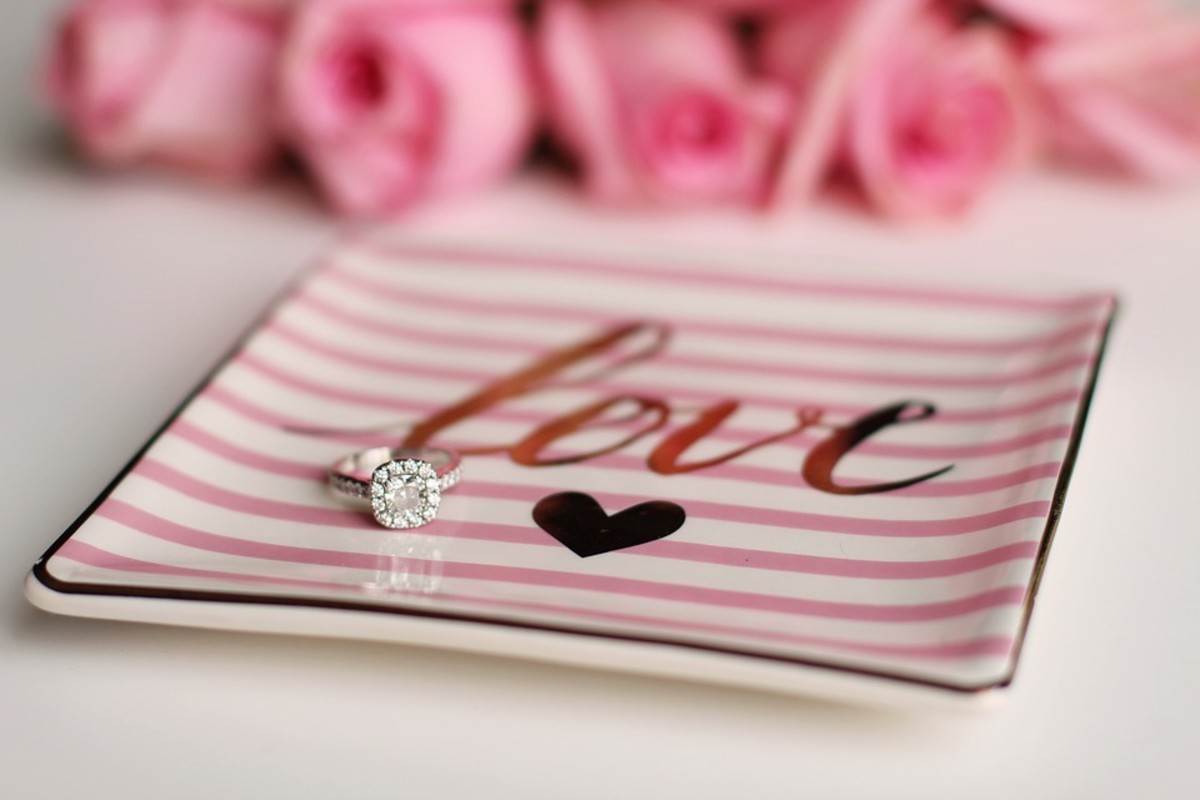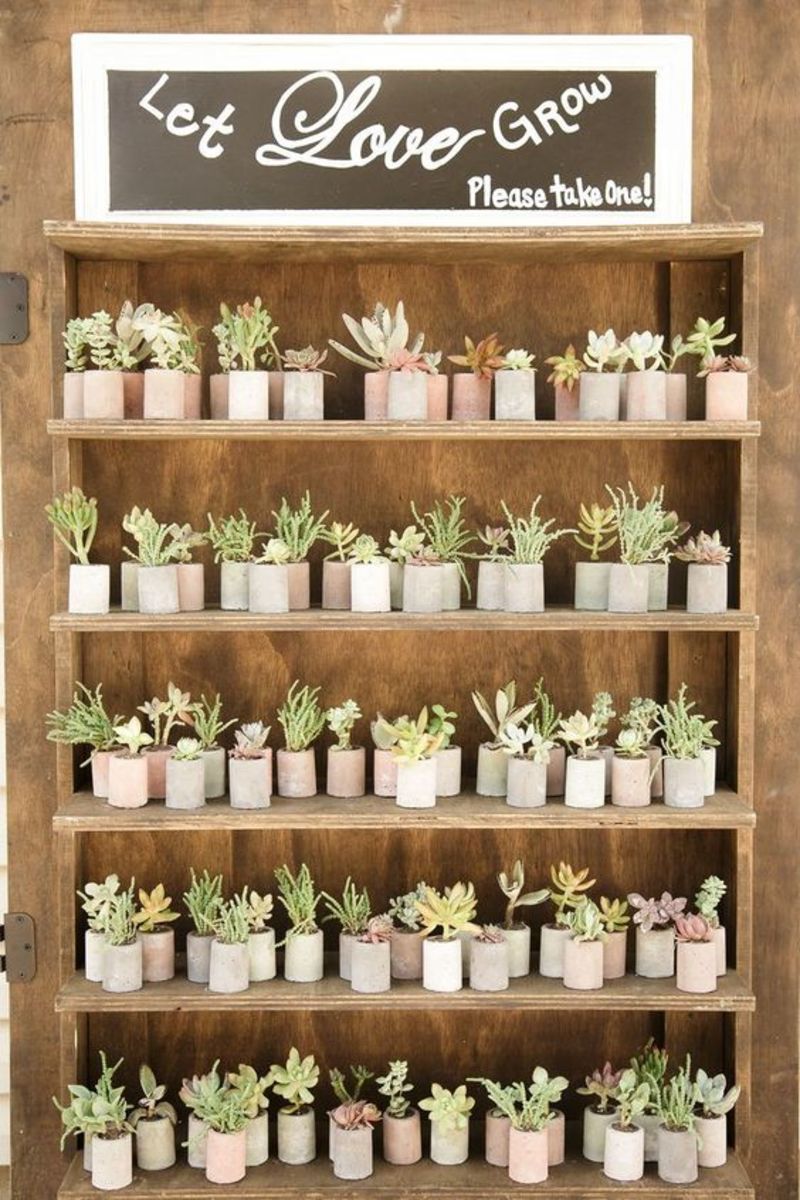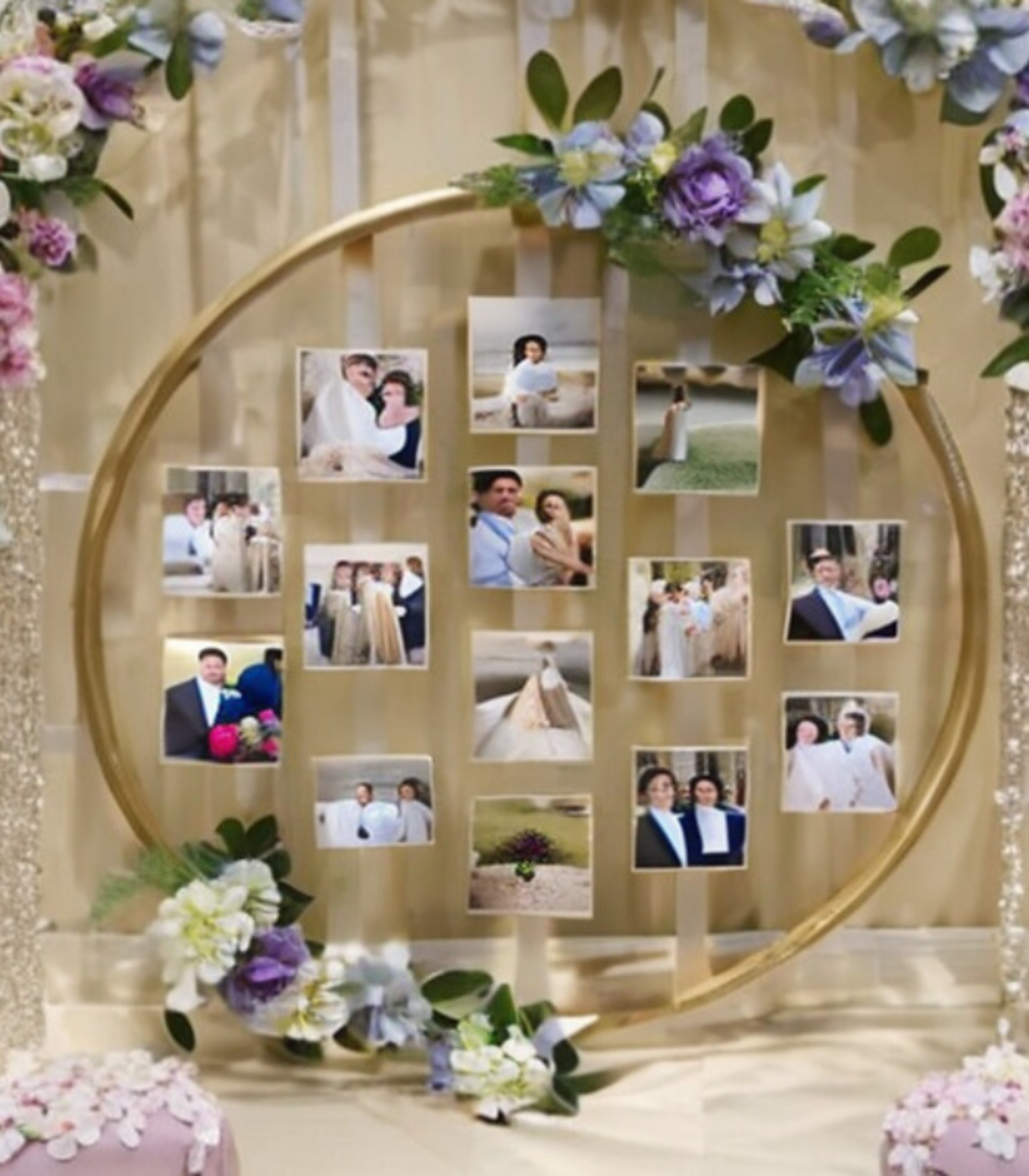Diamonds Are A Girl's Best Friend: A Diamond Guide
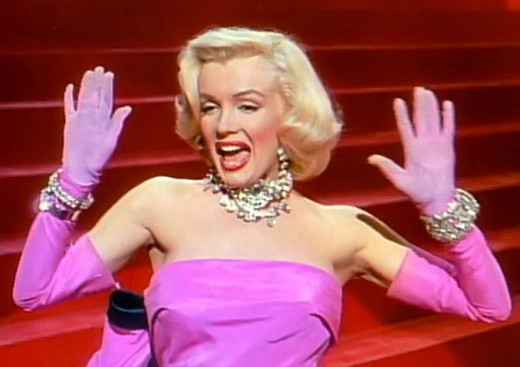
"Let us not be too particular; it is better to have old secondhand diamonds than none at all." ~Mark Twain
There is no stone quite as fascinating and sought after as the diamond. It's sparkling brilliance and alluring quality has long been of particular interest to many. Not only is the diamond a vision of beauty but it also represents commitment, love and romance. A diamond ring is often given as a sign of betrothal or engagement between a couple.
The word "Diamond" is a derivative of the Greek word "adamao" which translates into “unconquerable” or "I subdue." In order to describe the hardest material or stone ever known, the adjective "adamas" was used.
History
The diamond has endured a very long and interesting history. The very first deposits were formed over 900 million years ago. However, the earliest discovery of diamonds were in India along the rivers Krishna, Penner and Godavari, around the 4th century BC or about 4000 years ago.
It is believed that diamonds were originally revered for their luminosity and strength as well as their ability to deflect light and for engraving metals. Later the stones were utilized to provide protection during battles, as amulets to ward off evil spirits, and as cutting tools. The Hindus believed that diamonds held a great deal of power and this could be seen on their deity statues where diamonds were placed in their eyes.
In Ancient Roman and Greek empires, diamonds were often used. Both the Romans and Greeks believed that diamonds were tears of gods and splinters from falling stars. Diamonds were thought to bring good luck and prosperity. The Romans and Greeks also believed that diamonds were able to thwart the effects of negative astrological events. The classical Greek philosopher Plato wrote that diamonds were comparable to living beings, embodying celestial spirits. Also, many ancient Romans and Greeks wore diamonds as a talisman for attracting love interests and for increasing their sexual dexterity.
During the Middle Ages, the diamond was used in the practice of medicine. St. Hildegarde believed that hiding a diamond in the palm of one's hand while making the sign of the cross could cure illnesses and heal wounds. It was also believed that swallowing a diamond would cure maladies. During 13th century Europe, diamonds were used in jewelry. Their durability and beauty made them quite popular amongst royalty. In fact, Louis IX of France established a law that reserved diamonds exclusively for the king. That is how valuable they were considered at the time. But it wasn't until 1477, when Archduke Maximilian of Austria gave a diamond ring to Mary of Burgundy, that the tradition of diamond engagement rings began. Both male and female royalty wore diamond jewelry throughout the next century. Eventually, European aristocracy and the upper class wore diamonds by the 17th century.
As time passed, demand for diamonds increased throughout Europe. As a result, around 1330, what is believed to be the very first diamond cutting facility opened in Venice. Later it expanded to Paris in the 14th century and by the beginning of the 15th century, the diamond trade route went to Bruges, Paris and eventually to Antwerp.
Diamonds became grander and larger by the 16th century this was owing to the introduction of diamond setting. The process augmented the diamond's appearance and brilliance. By the 17th century diamonds were present in many smaller pieces of jewelry and by the 18th century they were placed in larger pieces.
During the 18th century, there were an abundance of diamonds and were worn primarily by the fairer sex. Diamonds were worn mostly in the evening as it was considered crude to wear them during the daytime.
It was believed that India was the solitary source of diamonds until about the 18th century when the mines essentially were in short supply and could not produce substantial amounts for the world's demands. As a result alternative resources had to be located and a small deposit was discovered in Brazil around 1725 but it was still not adequate enough for the demand.
The "Eureka" was the first diamond discovered in South Africa. The story was that a 15-year-old boy by the name of Erasmus Jacobs was exploring the banks of the Orange River in 1866. He happened to come across what he thought was an ordinary stone or pebble. Not knowing what it was, the young boy put it in his pocket. He was playing with it one day until his mother noticed its brilliance and took it. She showed it to a neighbour, Schalk van Niekerk. He was interested in this shiny stone and offered to purchase it but Mrs. Jacobs gave it to him. He then took it to John O'Reilly an expert and he had the stone investigated in Colesberg where the stone was deemed an authentic 21.25 carat stone.
In 1867, the "Eureka" diamond was placed on display at the Paris Exhibition. Some believed that the stone on display was a glass replica and that the real diamond had been sent to Queen Victoria for inspection. The diamond was purchased by Sir Philip Wodehouse Governor of the Cape Colony in South Africa for £500. It was later sold at Christie's of London's auction on April 16th, 1946 for £5,700 (at this point the diamond was part of a bangle). In 1967, DeBeers purchased the diamond and graciously returned it to the South African people where it is currently displayed in the Kimberley Mine Museum.
An enormous 83.50 carat deposit was discovered in 1871 Colesberg Kopje.It was such a significant find that it attracted thousands of prospectors to the area and prompted the opening of their first large scale mine known as the Kimberly Mine. This substantial discovery was somewhat of a double-edged sword. On the upside the discovery significantly increased the world's diamond supply. However, on the downside, it decreased the value of the diamond. The wealthy no longer considered the diamond to be as valuable and stones such as sapphires, rubies and emeralds were preferred choices for Engagement rings amongst the wealthier class.
By the mid 19th century diamonds were found in Eastern Australia. It wasn't until the late 1970s that Australia was considered a viable diamond producing source. On October 2nd 1979, geologists discovered the Argyle pipe near Lake Argyle in Australia. The deposit is considered to be one of the richest in the world. It produces approximately 33% of the world's diamonds per annum.
Many individuals today believe that all of the world's diamond supply comes from South Africa. In actuality, diamonds are a worldwide resource. Although South Africa is the predominant producer of diamonds in both value and volume, production is also dominated by the Congo republic (Zaire), Australia, Botswana and Russia. However, diamonds are mined in approximately 25 countries. Most continents have diamond deposits except for Europe and Antarctica. Diamond production has grown exponentially throughout the centuries. For example, during the latter part of the Middle Ages, India was producing approximately 50,000 to 100,000 carats per annum. Today there is approximately 130 million carats produced worldwide annually, worth US$9 billion. However, diamond deposits are depleting throughout the world with less than 20% of diamonds mined being of gem quality and less than 2% are considered investment diamonds. Essentially, a large percentage of mined diamonds, approximately 75%, are utilized for industrial purposes. To put things into perspective, in order to produce a gem quality, one carat stone, more than 200 tons of ore must be mined.
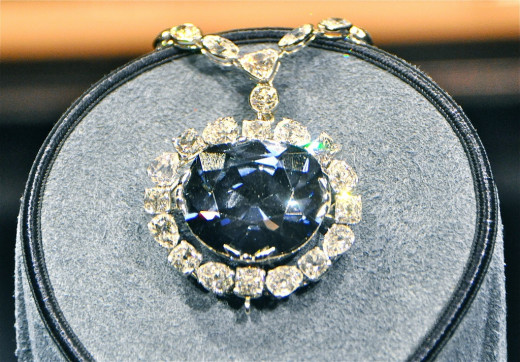
Conflicts Within The Diamond Industry
When one thinks about diamonds it conjures up so many pleasant thoughts. We think about new beginnings, love between two people and of course, commitment. However, for many individuals who work and live within diamond wealthy countries, these precious and brilliant stones have had a very negative impact on their lives.
The Diamond Industry has had it's share of controversy over the years. Besides diamonds, they have also produced abusive human rights issues, civil wars, exploitation of laborers, and environmental concerns.
A name commonly associated with these atrocities is "blood diamonds". This term has been coined to describe diamond production in countries where there is:
1) Forced labour
2) Civil conflict and unrest
3) Used for financial gain to support civil wars and insurgencies
4) Violence imposed on labourers and other civilians
5) Used to finance a warlord's activities
One of the most well known civil wars fueled by diamond production was in Sierra Leone. This was the first time this violence caught the attention of big diamond importing countries in the West. Other "Blood Diamond" nations are The Republic of the Congo, Zimbabwe, Angola, Côte d’Ivoire, Liberia, and The Democratic Republic of the Congo. It is estimated that the Democratic Republic of Congo alone has claimed at least 5 million lives not including the unfathomable aftermath endured by millions of individuals having to deal with the traumas of civil war. The ravages will be felt by generations for years to come.
In response to these catastrophic events, the diamond industry established, through legislation, the international Kimberly Process Certification Scheme in 2003. However, when the legislation was being discussed more than a decade ago,there was great opposition by the diamond industry with regards to being regulated by the government. As a result, the diamond trade was left to their own devices to control the problem and eliminate conflict. These self-governing efforts have proven unsuccessful. Essentially, the Kimberley Process Certification prohibits the mining of diamonds that are used to finance rebel causes in war-torn nations. In other words, if atrocities occur, the Kimberly Process does not help in any way , shape or form. However, the stones are certified as "conflict free" and sold to consumers worldwide.
The diamond trade produced a voluntary industry scheme called "System of Warranties". This was put into place to encourage companies to include a statement with invoices ensuring that the diamonds purchased are conflict free. However, supplying consumers with this statement is pointless because there is no way for them to verify it. In fact, according to Amnesty International and Global Witness, since the implementation of the system, most major jewelers in the USA and UK do not have their diamond suppliers independently audited.
Global Witness believes that consumers can take a proactive role in ensuring that pressure is placed on the diamond industry by acquiring detailed information from their jeweler about their conflict diamond policy and sourcing practices. This is sending a clear message that consumers will not purchase stones from countries in conflict. Remember that stones do come from other places throughout the world.
Global Witness and Amnesty International have produced a short guide on conflict diamonds for shoppers so take a look before you make your purchase.
http://www.globalwitness.org/campaigns/conflict/conflict-diamonds/diamond-industry
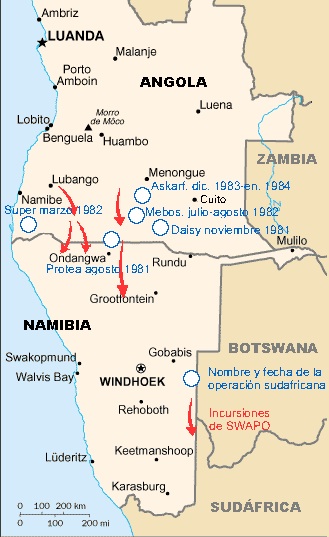
Origin Of The Engagement Ring
The idea of the engagement period started around 1215 when Pope Innocent III established a mandatory waiting period before marriage. This essentially forbade any priest from performing a wedding ceremony without publicly announcing the marriage between a couple within the church for a certain period of time, first. This was to ensure that neither the bride or groom had any skeletons in their closet. In the Catholic church today, a couple wishing to marry must see their priest at least one year prior to the marriage. Also, Banns are posted in bulletins and read weekly during Church services indicating a promise of marriage for at least three weeks before the big day. Almost all presiding officiants today regardless of religious beliefs say, "If any of you can show just cause why they may not lawfully be married, speak now; or else for ever hold your peace", during the wedding ceremony.
The first diamond engagement ring dates back to the 15th century. During this period the process for cutting diamonds was developed. The concept of giving an engagement ring was meant as a sign to others that a woman had made a promise to marry another man. Other stones used in engagement rings during this period were rubies, emeralds and sapphires.
It is believed that the first exchange of a diamond engagement ring occurred in the year 1477 when Archduke Maximilian of Austria gave one to the wealthy Mary of Burgundy. However, in those days marriages were more of convenience than love. At this point engagement rings were used often however, diamonds were used primarily by royalty and the very wealthy because they were quite rare.
Eventually, the Renaissance era produced rings that were ornately designed, richly detailed with elements of enamel.
The 18th century introduced the era of the diamonds owing to discoveries of new diamond deposits, but, by the early 19th century the diamond had become synonymous with love and romance. Queen Victoria of England also influenced the popularity for the precious stone as she herself had a great fondness for jewels. In fact, Prince Albert gave her an enamel band with a solitary diamond as a Promise ring and her engagement ring was a serpent symbolic of the ancient belief that it represented eternity and protection. As prosperity grew during this period, the use of diamond rings gained momentum. By the end of the 19th century, engagement rings were quite common. During this time, engagement rings were also set with fine gemstones or pearls.
The 18th and 19th centuries brought discoveries of new diamond mines in South Africa and Brazil which increased the supply of diamonds significantly. However, the most wealthiest individuals during this time still preferred the use of coloured gemstones for an engagement setting.
In and around WW1, prosperity in the US was on the rise and the demand for diamonds in Europe had essentially reached its peak. With this in mind, by the 1930s De Beers a family of companies that dominate the diamond, diamond mining, diamond trading and industrial diamond manufacturing sectors, founded by Cecil Rhodes in 1888, recognized this evident shift in wealth and started marketing to Americans instead of Europeans. As a result, Americans were buying diamonds in large quantities, regardless of the fact that a Depression was going on. America was quickly becoming the wealthiest nation in the world and De Beers recognized this. De Beers' 1948 slogan of "A Diamond Is Forever" was one of the most effective marketing campaigns they ever launched.
Today the diamond engagement ring has developed into a significant part of our culture and is the standard choice. However, we are also seeing another shift. Although the diamond ring continues to dominate, some couples are opting for different engagement ring choices such as coloured diamonds, coloured gemstones, pearls and so on. A good example of this change is when Prince Charles gave Lady Diana an engagement ring in February of 1981 which consisted of 14 solitaire diamonds delicately surrounding a 12-carat oval blue Ceylon sapphire that was set in 18-karat white gold. The price of the ring at that period in time was £28,000. It is the same engagement ring that her son Prince William gave Kate Middleton on their engagement a couple of years ago.

Things To Know Before Investing In A Damond
We are now going to take a look at everything that you should consider before investing in a diamond.
Five Main Components Of A Diamond
Table
A Table is the large facet in the center of the crown of a polished diamond which resembles a table. When the table of a diamond is larger it increases the sparkle or brilliance of the stone but the intensity of the colour or "fire" decreases. Conversely, if the table is smaller, the fire of the diamond increases and the brilliance lessens.
Crown
The Crown is the top portion of the diamond. It is located above the girdle and extends below the table.
Girdle
The Girdle forms the outer edge of the stone. It is the narrow band around the widest part of the diamond or gemstone which divides the Crown and the Pavilion facets.
Pavilion
The Pavilion is located at the bottom of the diamond. The pavilion connects the Girdle and the Culet.
Culet
The Culet is the smallest facet of a diamond and is located at the bottom of the stone.
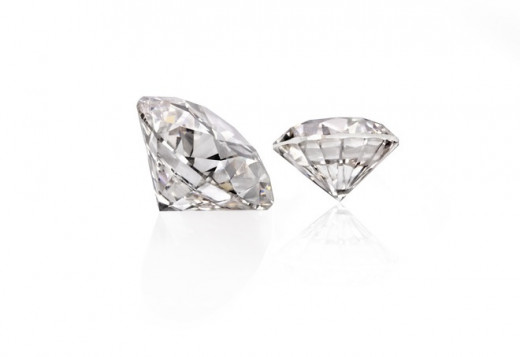
The 4 Cs Of A Diamond
The universally accepted method of describing the value of diamonds is through the "4 Cs", Cut, Color, Clarity, and Carat Weight. This system was created so that the quality standard of assessing diamonds would be status quo worldwide. Another reason was that this system would enable consumers to understand exactly what kind of diamond they are purchasing.
We are going to take a closer look at the "4 Cs" individually to better understand their importance and just exactly what they mean in the world of diamonds.
Diamond Cut
When you are searching for the perfect diamond the most important aspect of the stone is its cut. While other factors determine the quality, i.e. grades of colour, carat weight and clarity, it is the cut of the diamond that establishes the diamond's ability to reflect light, its proportions and balance. Regardless of whether a stone's grade has all of the above qualities, if the diamond is not cut well its appearance will be very dull. An Ideal cut diamond will reflect most of the light through its top surface.
The diamond has three main characteristics which are:
1) Scintillation-This defines the sparkle or shimmer when the diamond is exposed to light. In other words, when light flows into a diamond, it is refracted and shines through in a rainbow of colors.
2) Brilliance-This is the amount of light that a diamond actually reflects.
3) Fire-This expresses the way in which light distributes through a stone and the way a diamond exhibits the various colours of the spectrum.
Colour
When gem quality diamond colour is assessed, in actuality, it is based on the absence of colour. In other words, a perfect diamond has no colour or hue and as a result, is more valuable.
The Gemological Institute of America or GIA developed a diamond colour grading system which measures the level of colorlessness by comparing a stone under regulated lighting and precise viewing conditions to a Master Stone. The Master Stone is a special diamond used to define another diamond’s color during its grading process.
Colorless diamonds & diamonds that are yellow or yellowish brown are grouped into different categories. However, this method of grading does not apply to Fancy Colored Diamonds such as pink or chocolate diamonds. The fancy coloured diamonds have different colour grading standards.
Below is the GIA's grading system:
GIA Grading System
D-E-F
| G-H-I-J
| K-L-M
| N-O-P-Q-R
| S-T-U-V-W-X-Y-Z
|
|---|---|---|---|---|
Colourless
| Nearly Colourless
| Faintly Tinted, Usually Yellow
| Lightly tinted, usually yellow.
| Tinted, usually yellow - brownish.
|
Tint can be seen with naked eye.
| Tint will be visible to the naked eye
| |||
Information Retrieved Via The Gemological Institute of America (GIA)
Clarity
When we look at the clarity of a diamond, we are referring to the absence of inclusions, within the stone, and blemishes on the stone. Given the environment where diamonds come from deep within the earth and exposed to excessive heat and pressure, it is not surprising that the stones have markings or flaws.
So what exactly is an Inclusion? Well, an inclusion is within the stone and could be cracks, air bubbles, or other types of minerals. A blemish on the other hand is found on the surface of the stone and could consist of chips, scratches, or perhaps pits. Sometimes, blemishes happen during the cutting process. Therefore, if a diamond contains little to no inclusions and blemishes it is considered of rare quality and as a result is far more valuable.
The Gemological Institute of America's Diamond Clarity Scale consists of 6 categories. Some of these categories are further divided creating a total of 11 grades. Below is the explanation of the scale:
Flawless (FL) -This is a stone that when placed under 10x magnification have no visible inclusions and no blemishes.
Internally Flawless (IF)-This is a stone that when placed under 10x magnification have no visible inclusions.
Very Very Slightly Included (VVS1 and VVS2)-This is a stone that when placed under 10x magnification have inclusions so minor that it is virtually difficult for a skilled grader to detect it.
Very Slightly Included (VS1 and VS2)-This is a stone that when placed under t10x magnification have inclusions that when observed very closely are deemed as minor.
Slightly Included (SI1 and SI2)-This is a stone that when placed under 10x magnification , inclusions are noticeable.
Included (I1, I2, and I3)-This is a stone that when placed under 10x magnification inclusions are obvious. As a result, this may affect its brilliance and transparency.
For most of us, it is quite difficult to see the differences between a VS1 and an S12. However the differences are significant and that is why an expert in the field needs to accurately assess the diamond you are interested in purchasing. Although inclusions and blemishes lower a diamond's clarity grade it also provides the stone with an identity as no two diamonds are exactly alike. A GIA certificate includes what is known as a "plot". Essentially it is a way to compare the uniqueness of your stone's clarity characteristics to the "plot" provided. It basically ensures that the diamond you paid for is the one you are actually receiving.
Remember, when you are in the market for a diamond it doesn't have to be flawless to be spectacular. You are still getting a fabulous and affordable diamond with a VVS or VS grade. Other great choices for diamonds are S11 or S12 grades because inclusions are not readily visible. This would be a good choice if you want a lovely diamond without the exorbitant costs.
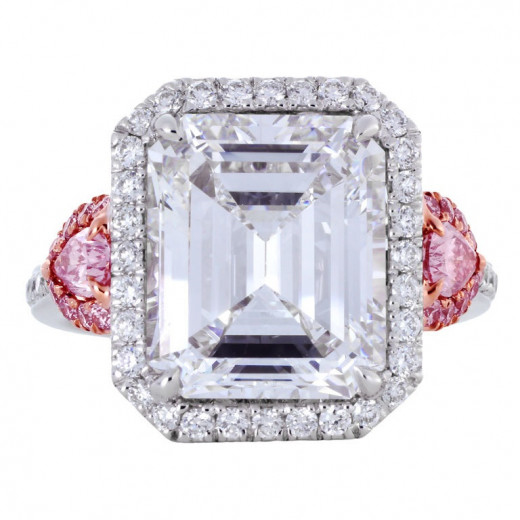
Carat Weight
According to the GIA, the name carat derives from the carob seed – a small seed with a uniform weight that early gem traders used as counterweights for balancing their scales.
When describing diamond carat weight, it is the specific measurement of how much a diamond or other gemstones weigh. A metric carat is 200 milligrams. Diamonds are often subdivided into 100 points. For example, a diamond can be referred to as 0.25 carats as a "twenty-five pointer" whereas a diamond that is more than a full carat is described in carats and decimals i.e. 1.08 carat is "one point oh eight carats". One thing to remember is that a stone's size is not reflective of its weight. In fact, the cut of a diamond may obscure its size and actual weight. Two diamonds of equal weight will not necessarily be the same value either because a diamond is always based on the 4Cs to determine its overall value.
Fancy Coloured Diamonds
A diamond with natural colour is a one in every 10,000 diamonds occurrence. They are referred to as Fancy Colour Diamonds and are purchased primarily for the intensity and distribution of the stone's colour. Also, the criteria for purchasing these stones differs from that of colorless or white diamonds. When choosing a Fancy Coloured Diamond, points like clarity or cut proportions are not quite as important. Below are descriptions of the various Fancy Coloured Diamonds.
Pink
The pink diamond is one of the world's most precious and seldom found diamond. The majority of pink diamonds are supplied by the Argyle mine. Pink diamonds are symbolic of femininity, love and grace. Pink diamonds are also considered to be an ideal alternative investment opportunity. Pink diamonds can be found as a pure single colour and others have nuances of Purple, Purplish, Brown, Brownish, Grayish, Orangy, Brownish Orangy, and Brownish Purple. Pink diamonds range from Faint, Very Light, Light, Fancy Light, Fancy, Fancy Intense, Fancy Vivid, Fancy Deep and Fancy Dark.
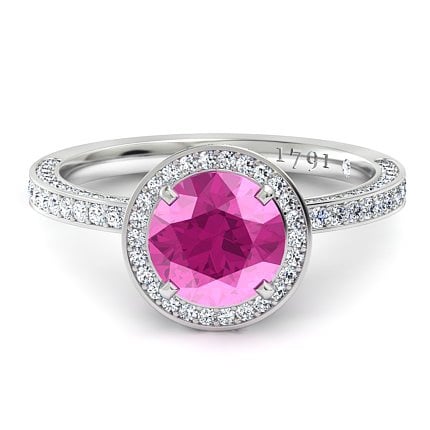
White
The most popular diamond colour is that of the white diamond. The white diamond comes in a large amount of varieties, sizes and shapes. White diamonds are essentially transparent with a little tint. Colourless or white diamonds are quite valuable.
Blue
Next to the white or colouress diamond, blue diamonds are the most valuable. They are often referred to as "Hope Diamond's". This particular stone comes in a bevy of shades, sizes and shapes. Blue diamonds can range from pale blue to deep hues. Blue diamonds can also contain up to three of the following nuances of colors i.e. Gray, Hints of Gray, Green, Hints of Green, Hints of Violet, Grayish Green.
Green
The fancy green diamond, produced primarily in the Argyle mine, is quite rare and very expensive. They come in beautiful shapes and shades. Green diamonds come in the following overtone colors of, Yellow, Hints of Yellow, Blue, Hints of Blue, Brown, Hints of Brown, Grey, Hints of Grey, and Greyish Yellow..
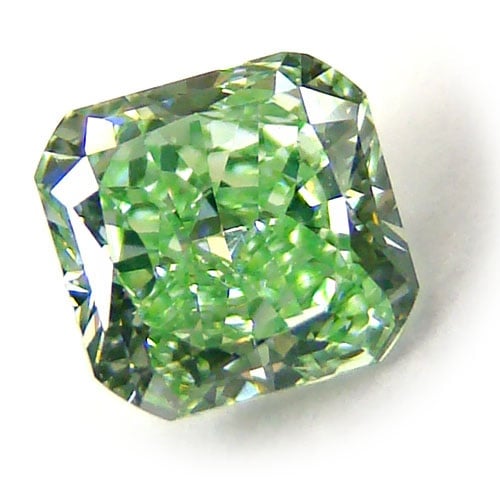
Champagne
The champagne diamond is naturally coloured and comes in shades of light straw to rich cognac. The champagne diamond is part of the brown diamond family and also comes in colours such as yellow brown, fancy brown orange, fancy orangey brown and pinkish brown. These shades of brown coloured diamonds are quickly becoming quite popular.
Yellow
Yellow Diamonds are the most well known and sought after of colored diamonds. The stone is a bright yellow and quite attractive. Owing to its affordability and stunning colour, it is quickly becoming more than a fashion statement and many couples are choosing the yellow diamond as an engagement ring alternative to the traditional colourless stone. The fancy yellow diamond comes in many shades from light yellow to very rich canary yellow shades. Yellow diamonds come in the following overtone shades, Brown, Hints of Brown, Brownish Green, Green, Hints of Green, Orange, Hints of Orange, Greyish Green, and Brownish Orange.
Orange
Pure orange diamonds are quite rare. Owing to its rare nature, gemological information regarding the stone is limited. The orange diamond ranges from brown-orange to yellow-orange and most orange diamonds have a brown or brownish color appearance to the naked eye. In order to be distinguished as a a “fancy color orange diamond”, the colour brown must be completely absent in the gemstone. The orange hue in the diamond is not as rare in nature as some other hues, so the GIA rarely grades an orange diamond as “pure” orange. However, when orange diamonds receive a "pure" grade, they are even rarer than the natural fancy red diamonds. The orange diamond has been quite popular amongst the rich and famous. For example, for the 2002 Oscars, the famous jeweler Harry Winston provided Halle Berry with "The Pumpkin Diamond" which is one of the largest natural fancy vivid orange diamonds in the world. At the 2011 Golden Globe Awards actress Kelly MacDonald wore a pair of oval orange diamond earrings.
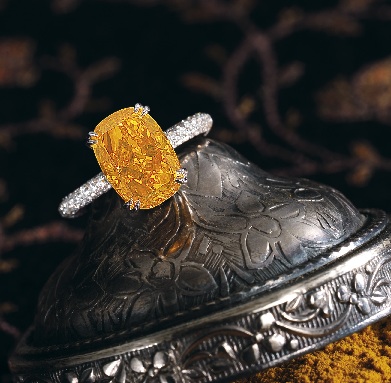
Red
Many diamond experts are not in agreement as to whether the red diamond or violet diamond are the rarest. The red diamond is a very desirable colour, however, it is so rare that very few jewelers have ever seen a natural red diamond anywhere in the world. Red diamonds are so rare that they continue to increase in value more so than any other coloured diamond. In fact, very few stones have been deemed "Fancy Red", indicating that they are pure red without any other colour nuances. Other varieties of red diamonds are Purplish Red, Pinkish Red or Brownish Red. A word of caution, there are synthetic diamonds produced in labs that are pretty close to the real thing. So if you are in the market for authentic red diamonds it should come with proper certification such as that from GIA.
Black
Black diamonds can make a piece of jewelry look stunning. This stone is not as brilliant as other stones but when added with other diamonds it can be spectacular. Imagine the beauty of a ring, bracelet, earrings or pendant with a mix of black and white diamonds or with any other coloured diamond for that matter. Black diamonds are certainly very versatile. As is the case with most coloured diamonds, black stones are quite rare. The reason these stones are black is because they are primarily filled with graphite creating dark inclusions. Because black diamonds have a polycrystalline composition, the stones appear opaque and it hinders them from reflecting light. Natural black diamonds are rare and affect the cost factor. The cost of some black diamonds are less than that of white diamonds, primarily because the stones are actually lower quality white diamonds that have been treated to turn black. The black stones you might see at the jeweler are actually natural stones that are treated to augment their colour. The process is generally achieved through either heat treatment or irrigation which changes the natural diamond into a very dark green shade that virtually appears black.
Purple
The Purple Diamond and Violet Diamond are very rare and are often looked upon as a collector's item. Currently, there are only two world-famous purple diamonds and there is very little information available about them. The Royal Purple Heart Diamond is the largest Fancy Vivid Purple diamond In existence. It is believed that the diamond came from Russia. The large diamond weighing in at over 7carats was cut into its perfect heart shape by the Julius Klein Diamond Corporation. It is unknown as to who owns the exquisite purple diamond. The second famous purple diamond is shrouded in mystery and is referred to as the Supreme Purple Heart even though it is in fact a round brilliant cut and not heart shaped at all. It's colour grade and clarity are not known and even its weight is not known. It is believed that the stone originated from the Amazon basin mine within the last 25 to 30 years. The diamond is incredible because its color changes depending from which angle you are looking at it. From one view it appears deep purple, and from another view it looks deep red. The delicate purple diamond is often associated with royalty and is considered a precious stone. This special coloured stone is a combination of both red and blue which give off both warm and cool effects. Purple diamonds are as rare and unique as red diamonds and are as equally exorbitant in price when placed on the market.
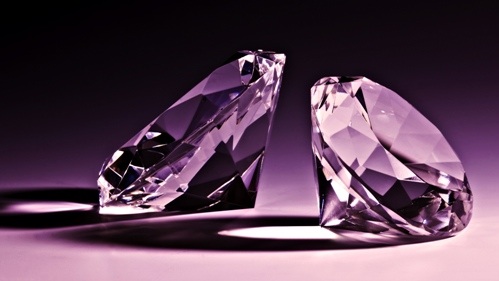
Gray
Gray diamonds have strong, unique colour combinations and are very cost friendly, as a result they are rather popular. Their beautiful, classic and neutral appearance are appropriate for every occasion. From certain angles a fancy gray diamond, especially fancy light gray stones, look almost like a white diamond. The Gray diamonds come in many fabulous color combinations. They range from yellow to combinations with the rarest of colors such as green, fancy greenish gray diamonds, or even blue, fancy blue gray diamonds and fancy gray blue diamonds. The range in colour intensity has an impact on their pricing as well.
Chameleon
A chameleon diamond is a fancy coloured diamond that changes colour when exposed to the daylight. Normally, chameleon diamonds are olive-grey or greenish in colour and have the ability to change to either a brown colour or yellowish shade. These unusual diamonds are the most unique of all gemstones.
Question:
Do you prefer a traditional Colourless diamond or do you like coloured diamonds?
Diamond Shapes
When selecting that all important diamond, it is important to give some consideration to the shape and style. Remember that it should reflect your unique personality and style. There are several different shapes and you can choose from traditional to modern. Below are the various shapes and descriptions:
Round Brilliant-Cut
This shape is the most popular and classic of all the shapes available. This shape offers the most sparkle, fire and brilliance owing to its 57 facets.
Emerald Cut
This elegant shape is sure to dazzle. The Emerald-Cut is timeless with its rectangular cut and larger top flat surface. Fewer facets help to accentuate the clarity of the diamond more than other shapes.
Princess-Cut
The Princess-Cut is a more contemporary shape and the second most popular.This particular shape is square with sharper corners and a bevy of intricate facets raising the intensity of the diamond's sparkle.
Radiant-Cut
This cut appeals to anyone seeking something a little more unique. This shape is not very popular. This cut is a combination of the geometrical lines of the emeralds shape and the sparkling brilliance of the round cut. The Radiant-Cut also has trimmed corners.
Marquise-Cut
If you are in the market for a diamond shape that delivers drama, then the Marquise is the choice for you. This shape has a brilliant cut and has tapered points at both ends with an elongated appearance.
Pear Shaped
This glistening teardrop shaped beauty has the rounded end of an Oval shape and tapered point of a Marquise-Cut. Definitely a splendid choice.
Oval Shaped
The classic Oval shape is similar to a Round diamond but slightly elongated. This shape offers a stunning brilliance.
Asscher-Cut
The Asscher cut diamond was created in 1902 by the Asscher Brothers of Holland. It is sometimes referred to as a "Square Emerald Cut". The Asscher-Cut is a stepped square cut and has cropped corners that are similar to an Emerald-Cut Diamond. Up until recently, jewelers were not carrying the Asscher-Cut, however, it is gaining interest as a few celebrities have popularized it. As a result, more jewelers are starting to carry it once more.
Fancy-Shaped Heart
The brilliant-cut heart shaped diamond has a very distinctive and beautiful appearance, it is also symbolic of love. The heart shaped diamond is often preferred in solitaire pendants as well as rings. However, heart shaped cuts do not work well with diamonds that are .50 carats or less. The reason being is that a small heart will not be very noticeable especially once the stone is set in prongs.
Cushion-Cut
The Cushion-cut, also referred to as "pillow-cut" or the "candlelight diamond" is best described as a four sided deep square or rectangle cut with rounded edges and large facets with a cushioned shaped girdle. The cut is usually multi-faceted to give the highest possible light refraction. the cushion-cut is one of the most brilliant sparkling diamond cuts. This antique cut was quite popular during the 19th century and the earlier part of the 20th century. However, this particular style is making a bit of a comeback and can now be found in some jewelry stores.
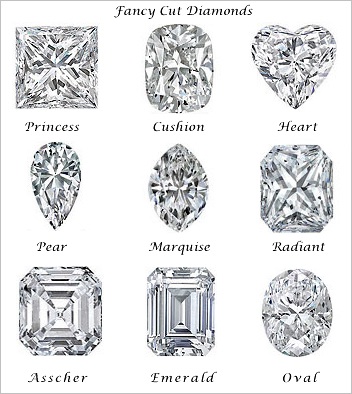
Question:
Which diamond shape do you prefer?
Finally........
The diamond engagement ring with its rich history and longevity, continues to be the most powerful expression of love and the promise of commitment throughout the world. There is no other symbol more fitting that represents a lasting union between a couple than that of the stunning beauty and strength of the diamond. I hope this segment on diamonds has been helpful as well as a learning tool. Remember that no two diamonds are alike, just like a snowflake. Therefore, before shopping for and investing in the perfect diamond, do your homework, shop around, but most of all, enjoy the experience.
Glossary Of Diamond Terminology
A
Artificial Stone - A gem material that is either a manmade imitation or a synthetic material.
B
Baguette - A gem, especially a diamond, cut in a long rectangular shape.
Baroque -Baroque or " irregular" style, are stones that are polished by tumbling it. This is when the stone is rounded and polished while leaving the rough shape intact. The stones are naturally cured by abrasives and water and tumbling mimics the natural process that forms smooth pebbles in rivers and steams. This type of stone is primarily used in the creation of unique pieces of jewelry such as brooches and pendants.
Blemish - A diamond blemish is a flaw found on the outside surface of a diamond.
Brilliance - Diamond brilliance is the reflection of a bright white light from the facets of the diamond and is determined by the artistry of the cutting and polishing. Each facet must be cut and shaped with precision, and placed with perfect symmetry . The major factors that affect the amount of brilliancy in a gem are refractive index, proportions, polish and transparency.
Brilliant Cut - Brilliant cut diamonds have facets that are shaped like triangles and kites. The facets radiate outwards and are positioned so that the light coming through them interplays to enhance the diamond's brilliance, or sparkle. The round brilliant cut features 57 or 58 facets.
C
Cabochon -A highly polished, convex-cut, unfaceted gem.
Canary - A term referring to diamonds with an intense yellow hue. The term "fancy yellow" is often used if the yellow makes the stone very distinctive.
Carat - A unit of metric measurement used for gems. One carat (ct.) equals 100 points, 200 milligrams, or 1/5 of a gram.
Carbon Spots - Any black-appearing inclusions in a diamond caused by the addition of the minerals graphite or hornblende.
Clarity Enhanced - Clarity enhanced diamonds are stones that had eye visible imperfections or inclusions but were treated to improve its appearance. This process is achieved by filling fissures or fractures with a transparent substance. Another term for this process is "fracture filled."
Clarity Grade - The GIA developed an International Diamond Grading System. Clarity is also one of the four value factors of a diamond. The GIA Clarity Scale has a range of 11 grades that range from flawless (FL) which means that there are no visible inclusions under 10x magnification, to Included which means that there are inclusions visible to the eye.
Cleavage - This is when a crystalline mineral breaks in definite directions referred to as cleavage planes. This breakage is achieved by cleaving. Cleaving is a process where a stone is studied so that the plane may be defined and divided with a swift blow which essentially splits the stone into proportions quickly rather than sawing.
Colored Stone - All natural gemstones except for diamonds or colored diamonds.
Color Grade - One of the four value factors of a diamond. Diamonds are ranked on a scale from "D" (colorless) to "Z" (noticeable tint of color, typically yellow or brown). Diamonds with saturation greater than "Z" color are considered Fancy Colored Diamonds and are graded on a separate scale.
Crown - The Crown is the top portion of the diamond. It is located above the girdle and extends below the table.
Culet - The Culet is the smallest facet of a diamond and is located at the bottom of the stone.
D
Diamond - A precious stone consisting of a clear and typically colorless crystalline form of pure carbon, the hardest naturally occurring substance.
Dispersion - This refers to the prism of light refracted from within a cut and polished diamond and relates to the sparkling colors that are emitted from the stone as it is viewed from different angles
E
Emerald Cut- This a type of step cut that is primarily used on diamonds and emeralds. With this cut, the girdle has the form of a square or rectangle with truncated corners.
Enamel - Often used in jewelry designs, enamel is a vitreous, usually opaque, protective or decorative coating baked or heated on metal, glass, or ceramic ware.
F
Facet - Diamond facets are the smooth surface areas of a diamond which have been cut, polished and positioned at different angles which allow light to enter and reflect back from the stone creating brilliancy and beauty.
Faceted Girdle - A faceted girdle is a series of tiny polished sides going around the diamond.
Feather - A "feather" is an area in the diamond which blocks the light. Diamonds have grain and this type of imperfection usually runs along an internal grain line of the mineral. Feather inclusions typically have a feathery appearance and can be highly reflective, colored, white, or transparent.
Finish - Grades the polish and symmetry of the diamond.
Fire- This expresses the way in which light distributes through a stone and the way a diamond exhibits the various colours of the spectrum.
Fluorescence- A glow which emanates from certain diamonds when exposed to ultraviolet light caused by trace amounts of Boron in the diamond.
Four C's- The universally accepted method of describing the value of diamonds through the "4 Cs", Cut, Color, Clarity, and Carat Weight.
Full Cut Diamond -This is a description of a brilliant cut, round stone with 57-58 facets.
G
Girdle- The Girdle forms the outer edge of the stone. It is the narrow band around the widest part of the diamond or gemstone which divides the Crown and the Pavilion facets.
H
Hardness - A stone's ability to resist scratching.
Hue - A hue is based on the concept that all colors are derivatives of three primary colors which are red, yellow and blue. All other colors or hues come from blends of these primary colors.
I
Inclusion - Inclusions are flaws either within the diamond itself or on the surface of a diamond which may or may not affect it's overall appearance. Some of these inclusions or flaws are feathers, pinpoints, clouds, twinning wisps (intergrowth) and needles. Less common inclusions are, knots, internal graining, laser lines, bearding, cleavage, cavities and included crystals or minerals.
Iridescence- The state or condition of being colored like a rainbow or like the light shining through a prism. Iridescence is an optical phenomenon of surfaces in which hue changes in correspondence with the angle from which a surface is viewed. This is often caused by multiple reflections from two or more semi-transparent surfaces in which phase shift and interference of the reflections modulates the incidental light.
L
Luster - The luster of a diamond is the ability of the stone to reflect light from one facet of the diamond to another externally.
M
Make - Trade term referring to the proportions, symmetry, and polish of a gemstone.
Marquise - This shape has a brilliant cut and has tapered points at both ends with an elongated appearance.
Mounting - Trade term for that portion of a piece of jewelry in which a gem or other object is set.
N
Natural- A trade term for a portion of the original surface of a rough diamond left by the cutter when polishing and faceting a diamond. Naturals are usually found near the girdle of a diamond and are represented in green on a plotting diagram.
O
Opaque- A term referring to the transparency of a gemstone; opaque materials do not transmit light.
Oval Cut - The classic Oval shape is similar to a Round diamond but slightly elongated. This shape offers a stunning brilliance.
P
Pave- A style of setting small stones as close together as possible in two or more rows.
Pavilion- The Pavilion is located at the bottom of the diamond. The pavilion connects the Girdle and the Culet.
Pear Shaped Cut - This is a teardrop shape and has the rounded end of an Oval shape and tapered point of a Marquis-Cut.
Platinum - A precious grayish-white noncorroding ductile malleable heavy metallic element that fuses with difficulty and is used especially in chemical ware and apparatus, as a catalyst, and in dental and jewelry alloys. It was first encountered by the Spanish in South America in the 16th century. It is far more expensive than white or yellow gold.
Plotting Diagram- A plot is a diagram of your Diamond with the Inclusions (both visible and microscopic) drawn on it. In other words, it illustrates the facets of a diamond and the approximate location and type of internal and external characteristics. The plotting diagram is always included with the EGL USA Diamond Certificate.
Point- A measurement in the weight of a diamond equal to 1/100 of a carat. For example, 0.50 carats is equal to 50 points.
Polish - This refers to how smooth the surface of a diamond is and whether marks remain from the polishing process.
Polished Girdle - A polished girdle on a diamond is virtually clear. A polished girdle is considered a finishing touch but is not critical. A polished girdle is most desirable when the diamond is a fish-eye, where polishing will reduce the effect of the girdle's reflection in the table.
R
Reflection - This occurs when light enters the surface of a diamond, a portion of it is reflected back out of the top.
Refraction - The remaining rays of light travel into the center of the diamond and bounce off its internal walls, an effect known as refraction.
Rough - Any uncut or unpolished gem material.
S
Scintillation- This defines the sparkle or shimmer when the diamond is exposed to light. In other words, when light flows into a diamond, it is refracted and shines through in a rainbow of colors.
Simulated Stones -Simulated gemstones are created in a laboratory environment. These stones look similar to an authentic stone, but do not have any of the same properties as their natural counterparts.
Single Cut - Single Cut Diamonds are small Diamonds usually under 10 Points (.10 Carat) that are cut differently than a normal standard cut Diamond. The Facets are smaller and fewer which makes it less expensiveA single cut is a simple form of cutting a round diamond with only 18 facets.
Solitaire- A term referring to a ring containing a single diamond or other gem.
Star Facets- This is one of the eight triangular facets found on the upper crown (near the table) of a brilliant-cut diamond..
Symmetry - This refers to the exactness of the shape and arrangement of facets. They should be a mirror image of each other.
Synthetic - A manmade gem material that has essentially the same physical, optical and chemical properties as that of its natural counterpart.
T
Table- A Table is the large facet in the center of the crown of a polished diamond which resembles a table. A diamonds table width percentage is the width of the table divided by its total diameter. It is a crucial parameter for a diamonds sparkle.
Tone - An attribute of color that determines its lightness or darkness of shading.
Transparency - The ability of a substance to transmit light.
Trillion - A type of brilliant fancy shape that is triangular.
U
Ultraviolet Light - Light that is invisible to the naked eye because it consists of wavelengths shorter than those of visible light.
V
Vermeil - This is a combination of sterling silver, gold, and other precious metals, commonly used as a component in jewelry. It order to be considered vermeil, the gold must be minimum 10 carat (42%) and be at least 2.5 micrometers thick.
W
White Gold - An alloy of yellow gold that has silver, zinc, or platinum as a whitening agent.
Y
Yellow Gold - The natural color of pure gold as well as the color of karat gold when alloyed with certain metals.
Diamond Shapes And Cut Styles
You May Also Like:
- PLANNING AN ENGAGEMENT PARTY
Discover how to plan the perfect Engagement Party. From proper etiquette to staying within your budget, learn how to create the perfect affair. - 100 Fabulous Years Of Wedding Gowns
In this segment we are going to take a historical look at bridal gowns and how they have evolved throughout the years. It is interesting how elements from the past are incorporated in the present. I suppose history does repeat itself. - The Wedding Ring: A Brief History
In this segment we will be taking a look at the history of the most coveted element of all nuptials, the Wedding Band. For thousands of years, the wedding ring has represented the union of two individuals and sometimes it meant even more.




